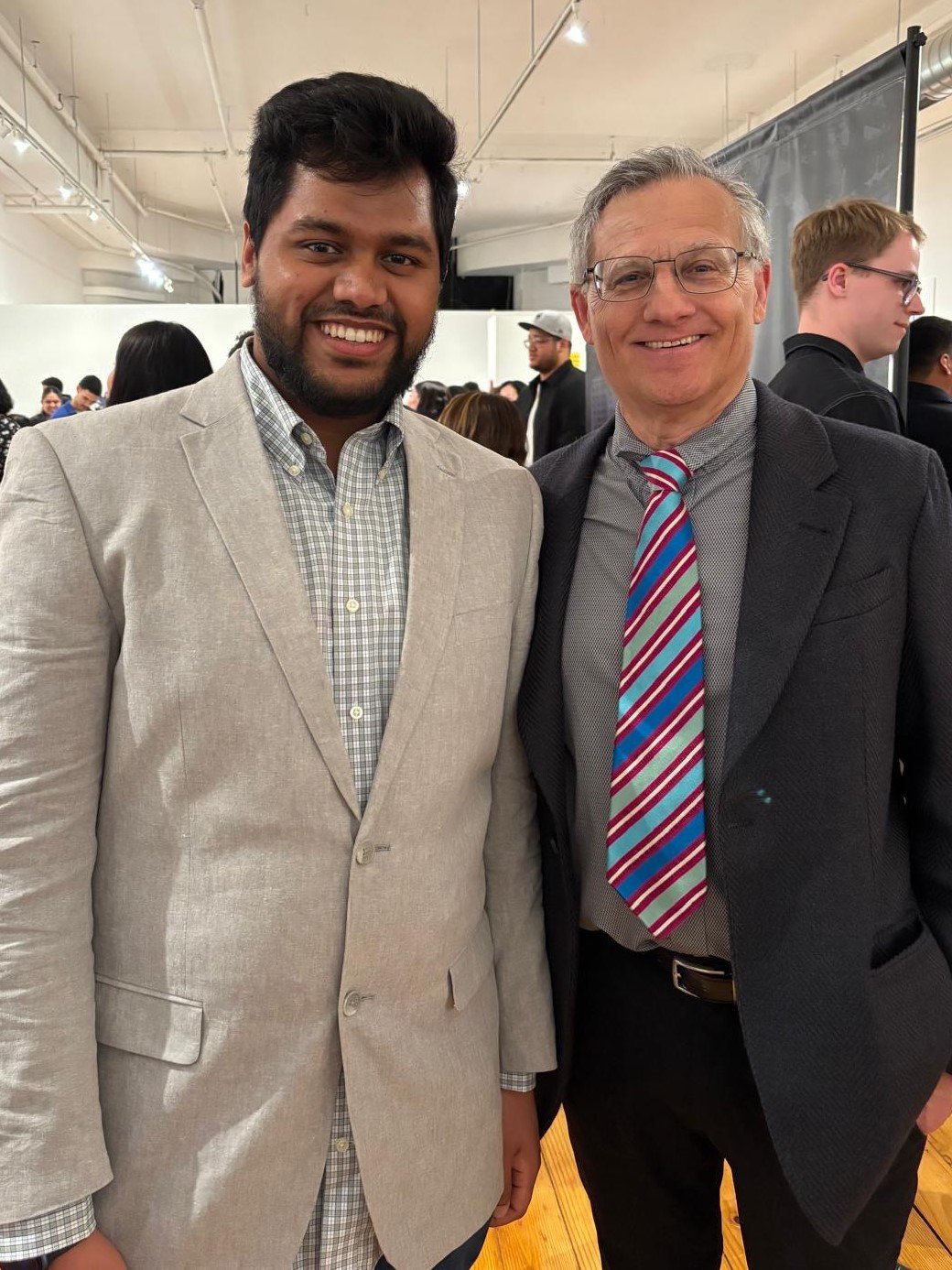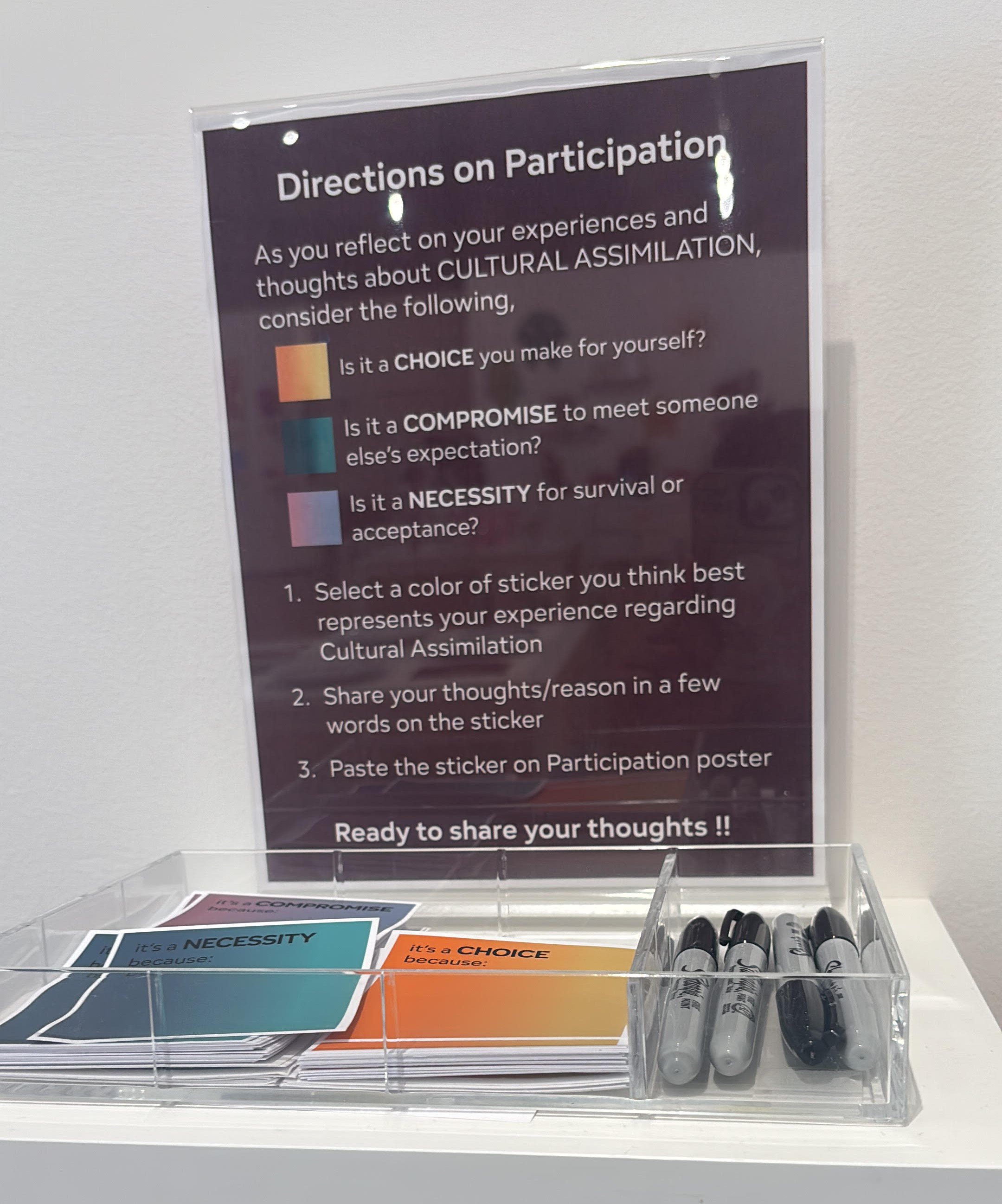Identity Shift - Everyone of us goes through a identity shift one way or the other, in major situations where people migrate from one country to another, one state to another, from college to working for an organization, moving jobs from one organization to other, and so on.. We all adjust to new cultures, languages, customs, ways of working, adjusting to professional environments, adapting to new cuisines, culinary habits, etc. This actually makes the world very interesting and inclusive of one another’s heritage, habits and culture. Through ‘Cultural Assimilation’, we undergo a transformative process, evolving our cultural identity and integrating into a new cultural context.
Through personal stories, artistic expression, and shared experiences, Identity Shift raises awareness, encourages cultural exchange, and fosters mutual understanding. It aims to reduce stereotypes, build social cohesion, and advocate for meaningful changes. Ultimately, Identity Shift highlights the fluidity of cultural assimilation, transforming challenges into triumphs and showing how Identity evolves through connection and community.
Cultural assimilation is a dynamic process through which individuals or groups integrate into a different culture, shaped by ‘Perception’, enabled by ‘Acceptance’, sustained by ‘Habit’, guided towards ‘Harmony’, and ultimately culminating in ‘Unity’.
The journey begins with Perception — how individuals and societies view cultural difference. If seen through a lens of curiosity and respect, perception becomes the fertile ground for meaningful integration. However, if tainted by fear or superiority, it becomes a barrier, stalling the very possibility of assimilation.
Acceptance follows as a conscious choice, born of empathetic perception. It is the willingness to embrace what is unfamiliar, to listen before judging, and to value difference not as division, but as enrichment. Acceptance enables individuals to engage with new cultures not merely as observers, but as participants.
With acceptance comes Habit — the steady repetition of shared practices, dialogue, and daily coexistence. It is in the mundane rituals of life—eating, working, celebrating—where cultural bridges are most effectively built. Habit normalizes diversity, making what was once foreign feel familiar.
As habits solidify, Harmony begins to take root. Misunderstandings give way to collaboration, and social cohesion replaces tension. Harmony is not uniformity, but rather a balanced coexistence where cultural expressions complement rather than compete.
Ultimately, this leads to Unity, not as assimilation’s end but as its higher form. Unity reflects a shared identity forged through difference, where all contribute uniquely yet belong equally. It is the culmination of mutual growth, where cultures merge in spirit without vanishing in substance.
Thus, cultural assimilation—when guided by positive Perception, embraced with Acceptance, reinforced through Habit, and sustained in Harmony—becomes a path to authentic and lasting Unity.
Cultural assimilation is a dynamic process through which individuals or groups integrate into a different culture, shaped by ‘Perception’, enabled by ‘Acceptance’, sustained by ‘Habit’, guided towards ‘Harmony’, and ultimately culminating in ‘Unity’.
The journey begins with Perception — how individuals and societies view cultural difference. If seen through a lens of curiosity and respect, perception becomes the fertile ground for meaningful integration. However, if tainted by fear or superiority, it becomes a barrier, stalling the very possibility of assimilation.
Acceptance follows as a conscious choice, born of empathetic perception. It is the willingness to embrace what is unfamiliar, to listen before judging, and to value difference not as division, but as enrichment. Acceptance enables individuals to engage with new cultures not merely as observers, but as participants.
With acceptance comes Habit — the steady repetition of shared practices, dialogue, and daily coexistence. It is in the mundane rituals of life—eating, working, celebrating—where cultural bridges are most effectively built. Habit normalizes diversity, making what was once foreign feel familiar.
As habits solidify, Harmony begins to take root. Misunderstandings give way to collaboration, and social cohesion replaces tension. Harmony is not uniformity, but rather a balanced coexistence where cultural expressions complement rather than compete.
Ultimately, this leads to Unity, not as assimilation’s end but as its higher form. Unity reflects a shared identity forged through difference, where all contribute uniquely yet belong equally. It is the culmination of mutual growth, where cultures merge in spirit without vanishing in substance.
Thus, cultural assimilation—when guided by positive Perception, embraced with Acceptance, reinforced through Habit, and sustained in Harmony—becomes a path to authentic and lasting Unity.
Giveaway Sign stickers - This takeaway for visitors expresses my Thanks!! for their time.
Perception frames how cultural differences are initially understood or misunderstood.
Blue's versatility makes it a popular choice for influencing Perception and emotional resonance.
Light blue conveys serenity and tranquility (Calmness) to Darker blues often symbolizing professionalism, reliability, and Trust.
Acceptance allows for the recognition and valuing of those differences.
Violet's complex, multifaceted nature makes it a compelling choice for designs aiming to convey Creativity, Luxury, and Acceptance.
Transformation: From light to dark, violet signifies growth, evolution, and acceptance of change. Also Violet's uniqueness promotes self-acceptance and appreciation for others' individuality.
Habit forms as shared practices emerge and are adopted.
Yellow to Violet gradient could be used in designs promoting habit-forming, personal growth, or wellness initiatives.
Transition and Growth: Yellow (optimism, energy) transitioning to violet (creativity, transformation) symbolizes the process of building positive habits, growing, and evolving.
Harmony develops when diverse elements coexist peacefully through mutual respect.
Green is often associated with nature, symbolizing growth, harmony, and balance.
The soothing quality of green can evoke feelings of serenity and peacefulness, Promoting relaxation, balance, and harmony in mental and physical health. And the gradient to darker Green illustrating progress, stability, and harmony in personal development.
Unity arises as a collective identity forms, without erasing cultural uniqueness.
The yellow to orange gradient's warmth and energy make it an excellent choice for designs focused on unity and connection.
Yellow (friendliness, optimism) transitioning to orange (enthusiasm, warmth) can symbolize building connections and unity among people. The gradient's energetic tone represents the dynamic collaboration and collective effort required for unity.
These concepts are depicted as Street signs to show how individuals embrace them.
The corner mounting of these signs resembles the convergence of Perception, Acceptance, Harmony and Unity.
Each sign resembles duality while showing these concepts in a second language, Urdu, which is shown in the backdrop.
Visitors were able to relate these concepts to their own experiences about Cultural Assimilation and pick a sticker, - if it is a, CHOICE, a NECESSITY, or a COMPROMISE, and shared their thoughts about it.
Participatory board and Stickers
As to get a view of people first hand, by talking to them, I interviewed three first generation migrants. Visitors were able to hear those interviews by scanning the QR codes as part of my podcast series called "Blended voices".
They shared their personal thoughts and experiences about Cultural Assimilation based on my questions and their individual experiences.
Blended Voices

























